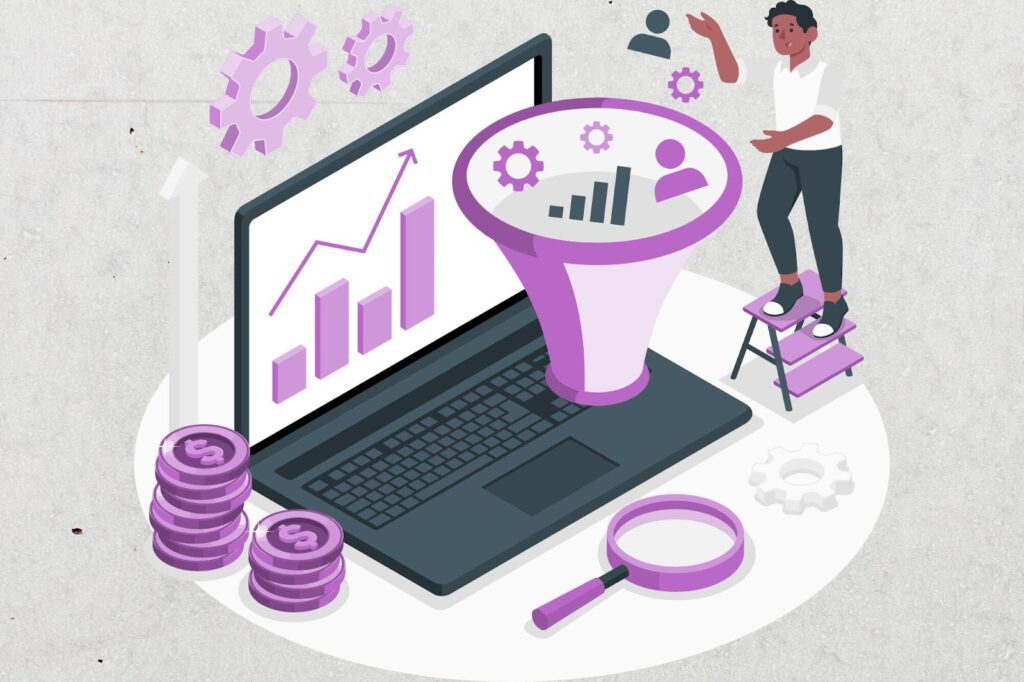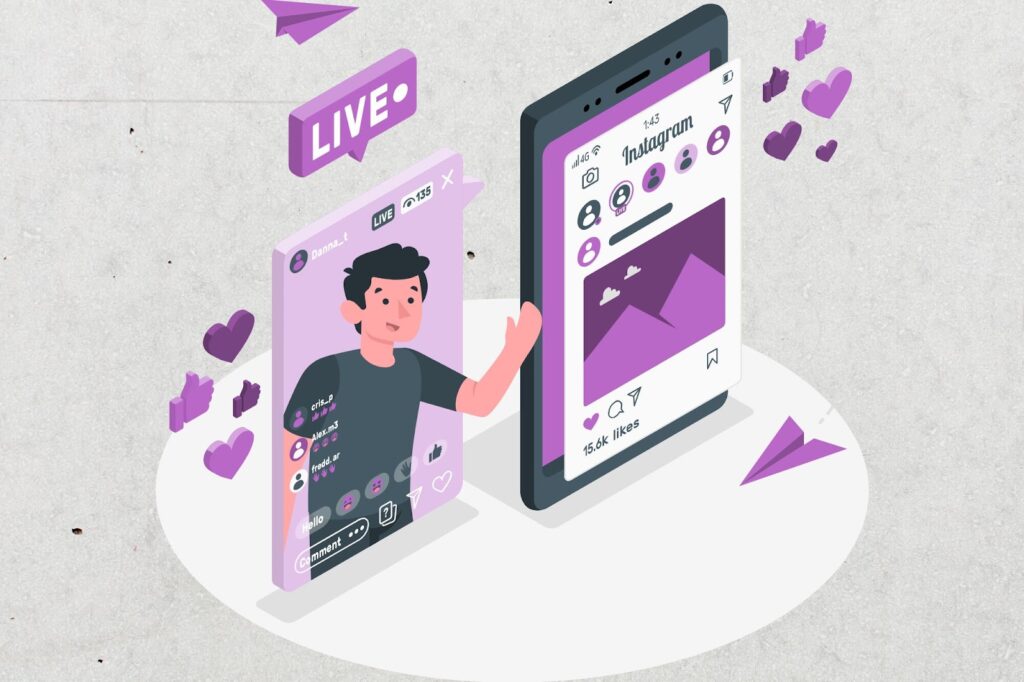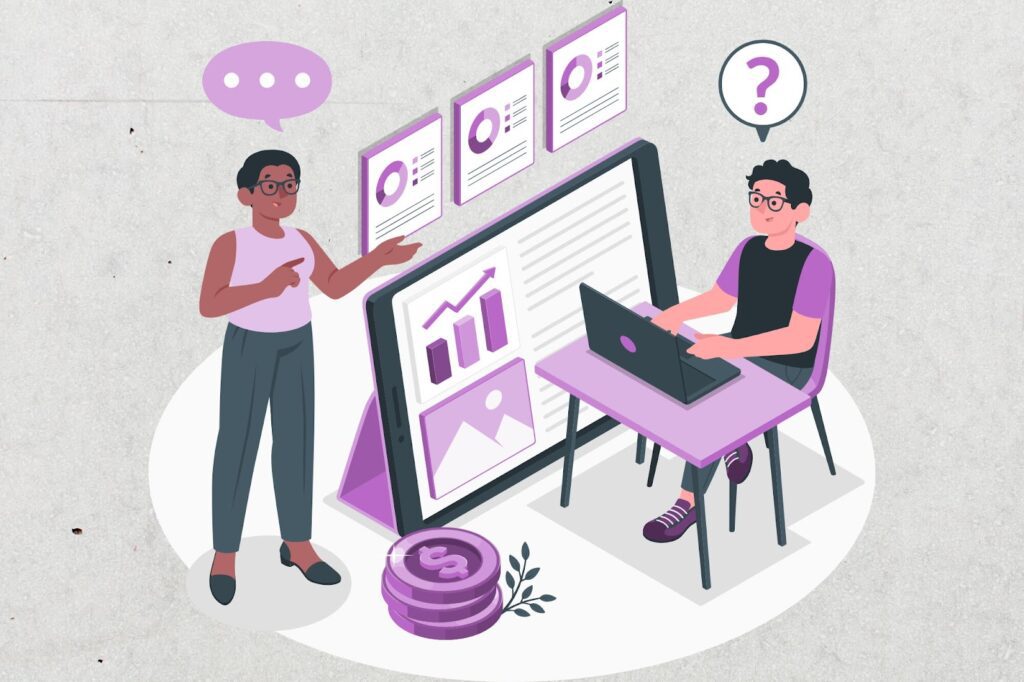






Quick Overview
Global digital marketing connects brands with audiences across borders, blending culture, technology, and strategy. It drives growth but also presents challenges around compliance, competition, and localisation.
This guide covers:
✅ Cultural differences and language barriers that shape audience engagement
✅ Legal and regulatory issues including data privacy and advertising standards
✅ Market saturation, competition, and unequal access to technology
✅ Opportunities in emerging markets, data-driven insights, and global campaigns
✅ Scalability through AI, personalisation, and streamlined collaboration
Digital marketing strategy has changed so fast that it is now part of every modern business strategy. If you don’t know what the latest trend or best practices are, your competitors are going to get ahead of you. A clear strategy for digital marketing is important because it makes sure that you are focusing on the right things and doing them in a way that makes sense with where consumers are today. It means making sure that your business is ready to adapt to new developments so that you can reach more people more effectively and ultimately create more growth.
Knowing who your target audience is and being able to understand them is the foundation of all digital marketing. Without a clear understanding of who your audience is, creating content or campaigns that speak to them won’t happen. When you’re defining your target audience, the key to getting it right isn’t just about knowing their demographics, such as age, gender or geographic location. It’s about understanding what they do, why they do it, what their goals are, what challenges they face and what motivates them. With this level of insight, you can create messages and offers that are tailored to their needs, making your marketing efforts far more effective and engaging.
You can define the target audience correctly using various tools and methods: Creating buyer personas – detailed, semi-fictional representations of your ideal customers based on market research and real data about your existing customers. Buyer personas help you visualise and empathise with your target audience, helping you to develop content and campaigns that speak directly to their interests and pain points. Data analytics tools – give you access to data about your target audience and their online behaviour, preferences and interactions with your brand. Platforms such as Google Analytics, social media analytics and customer relationship management (CRM) systems provide deep data that you can use to refine your understanding of your target audience and ensure that your digital marketing efforts reach the right people.
The most important part of any digital marketing strategy is setting clear, well-defined objectives. Defining goals early and clearly will give you focus and a yardstick by which you can measure your efforts. Make sure that your goals follow the SMART criteria – Specific, Measurable, Achievable, Relevant and Time-bound. These are important because you need your goals to be realistic and compatible with your business goals. For example, rather than saying, ‘I want to increase my website’s traffic’, a SMART objective would be ‘increase organic traffic to my website by 25% in the next six months’. Being more specific clearly defines the goal and reduces the scope of your efforts.
Having objectives in place helps you to identify key performance indicators (KPIs), which are measurable values that give you an indication of how well you are achieving your objectives and help you set benchmarks for success. For example, one of your objectives is to improve lead generation. In that case, your KPIs might include:
By monitoring KPIs on a regular basis, you can learn where you are hitting your targets and where you’re falling short and adjust your strategy accordingly to stay on course and achieve your goals.

The right channel mix is another important aspect of building a successful digital marketing strategy. There are many digital channels to consider, from social media (Facebook, Instagram, LinkedIn, etc) to email marketing, content marketing (blogs, podcasts, videos, etc) or search engine optimisation (SEO) promotion. The right channel mix is critical to success in digital marketing. Channels have different strengths, and they are also better suited for different types of content and different marketing objectives.
Social media is great for building brand awareness, interacting with your audience and driving traffic to your website. However, the platform you use should be driven by where your audience is spending their time. For example, suppose your audience is primarily young adults. In that case, Instagram and TikTok might be your best bets, while a B2B audience will be better targeted with LinkedIn. Email is another powerful channel, and it’s an ideal choice for the long game of lead nurturing and relationship-building. For B2B companies, I’d even take email over a watered-down social media presence. With email, you can send customised content straight to your subscribers’ mailboxes and keep your brand at the forefront of your audience’s minds.
Blogging, video, and infographics are all forms of content marketing that are important for establishing yourself as a thought leader and improving your SEO. High-quality, relevant content attracts and engages your audience and also helps your website rank higher for certain search terms (increasing organic traffic). SEO is also a vital element of any digital strategy – it’s the process of optimising your website and your content to improve your visibility in search engine results pages (SERPs). It ensures that your audience can find you when they search for your products or services online. Where you put your digital efforts should be determined by your audience. Understanding where they spend their time online and how they like to consume content will help you focus your efforts on the right channels for your business.
The dominance of video in digital marketing content has grown and gained even further momentum in the recent past. YouTube, Instagram, TikTok, and Facebook are some of the popular platforms that are taking the world of digital media by storm, encouraging video formats. This predominance of video is owed to their being quick, easy to engage with, and impactful when compared to other types of content, such as text or images. Whether it’s short-form videos, live streaming, or webinars, video content is getting more and more attention. The perceived higher level of engagement, better retention of the messages, and brand recall make digital marketing more effective for brands that use video content.
A few best practices you can consider are:
1. Know your audience. Do your research, listen to feedback, and make sure you’re creating video content that is the most helpful.
2. Create the best type of videos for each audience. If you’re planning to distribute your videos on social media, use short-form content. On YouTube or your website, you can explore creating longer-form content such as tutorials and webinars.
3. Optimise your videos for each platform by creating content with the right aspect ratio, adding captions, and using your keywords to make them discoverable.
4. Use video as part of the digital marketing mix to illustrate your brand’s personality, tell stories, and provide educational or entertaining content. When you use video to serve a purpose, you can improve your digital marketing efforts and reach.

Personalisation has become the top digital marketing trend as expectations of individualised and personal interactions with brands continue to grow. Consumers now expect the content they see online to be personalised, the emails they receive to be relevant to them and their interests, and the ads they are served to be based on their behaviour. Personalised marketing can significantly improve the customer experience, increase engagement, retention and conversions, and help brands create more meaningful relationships with their audience.
To personalise your digital marketing, the first step is to collect and analyse data about your audience’s behaviours, preferences and engagement with your brand, using tools such as CRM systems, analytics platforms and social media insights. Once your audience is segmented based on the information you have gathered, you can then tailor your content, offers and messaging to each segment. For instance, you can use personalised email campaigns that address recipients by name and make specific product recommendations based on their previous purchases and interests. Similarly, personalised ads can be created for specific segments of your audience to serve them with offers or content that aligns with their interests. Through personalisation, you can enhance customer satisfaction, ultimately resulting in better results from your digital marketing campaigns.
The rise of voice search and artificial intelligence (AI) in digital marketing is altering the way in which brands connect with consumers online, thanks to the growing popularity of voice-activated devices such as Amazon’s Alexa, Google Assistant and Apple’s Siri. The increasing use of voice search to find information, make purchases or interact with brands is changing the way in which digital marketing needs to happen, as content needs to be optimised for voice search, which is often longer and more conversational compared with text search.
Make sure that you optimise your content for voice search. This means that the content you create should be able to answer the questions your audience is more likely to ask. Write text that sounds human and figuratively talks to your audience, using long-tail keywords, and ensure that your website is mobile-friendly and fast. Don’t be left behind. Be prepared. Another way to leverage AI in your digital marketing strategy is to use existing AI-powered tools and technologies. You can use predictive analytics to predict consumers’ behaviour and conversions, chatbots for better customer service, personalised content recommendations for increased engagement, and many more.
Social commerce – the convergence of e-commerce activity with social media – is also an important trend in digital marketing. Social commerce is an e-commerce feature that allows consumers to find and buy products directly on social media. As platforms such as Instagram, Facebook or Pinterest continue to roll out shoppable posts and features, consumers can make quick and frictionless purchases without having to leave the social media platform. This social commerce capability can accelerate the buyer’s journey and be a differentiator for conversion. Brands with shoppable social commerce features can unlock a new revenue stream and gain visibility and engagement on social media.
To incorporate social commerce successfully in your digital marketing strategy:
The reason you should consider social commerce as a part of your digital marketing strategy is because of the convenience it provides to customers and the increasing trend of shopping through social media.

Quality content and relevance are at the centre of the digital marketing approach. Good content attracts and keeps your audience; it builds up trust with potential customers. It all depends on knowing your audience well, what their needs, interests, and pains are, and how to produce content that is helpful to them in solving their problems and answering their questions. That’s how you become a helpful resource for them.
Conducting good keyword research is a foundational part of good content creation. People want to make sure that the audience will see the content they’re creating. It’s meant for those who are most likely to encounter your content through search. The right keyword research will help you determine what words and phrases are being searched for so that you can optimise your content to rank in searches. Then, you’ll get a greater number of people finding your site through organic (non-paid) searches. Content creation through storytelling is about creating narratives that connect with readers on a deeper emotional level. This makes your content more interesting and memorable. Consistent brand voice is another part of content creation that can help you establish your brand as a go-to source. We all know brands that have a specific voice, whether they’re more formal or more casual. Regardless of the tone, consistency is important.
With more than half of all internet users accessing content from their mobile devices these days, you don’t have to ‘optimise for mobile’. You have to. Optimising for mobile means tailoring your website, emails, and ads to smartphones and tablets so that visitors to your site can read, click on, and play with content as easily on the go as they can on their desktops. The trend towards mobile and the increasing percentage of online sales it represents is the reason why a mobile-friendly website is so important. Page load times, search engine rankings and the entire user experience depend on it. Google, for example, gives greater visibility in search results to websites it considers mobile-friendly.
For websites, start with a responsive design that automatically fits your content to different screen sizes and orientations. Make sure it looks good and functions well on smartphones, tablets and desktops. Also, pay careful attention to page load times. Slow-loading pages tend to cause high bounce rates. Compress images and trim code, and use fast host services to reduce load times. For emails and adverts, design with mobile users in mind, too – clear call-to-action buttons, large fonts, and layouts that are easy to navigate with a fat finger on a touch screen. In short, mobile optimisation helps you offer your users a superior experience, and that’s a good thing. It also increases your chances of turning visitors into customers on a device that they’re comfortable using.
Data and analytics can be harnessed to refine and perfect your digital marketing operations. Tracking and analysing KPIs over time can help you learn what is working within your strategy, what should be changed, and where more investment makes sense. Platforms such as Google Analytics, social media analytics and CRM can help you gather and dissect detailed information on user behaviour, engagement, conversion rates and much more so you can understand how your audience is engaging with your content and what calls you to action.
To utilise data, first set up tracking across all your digital marketing channels – on your website, through your social media accounts, or via your email campaigns – to keep track of your performance in near real-time as it unfolds and identify patterns or trends that might inform your strategy. Suppose you see certain types of content outperforming others, for instance. In that case, you might create more of that type of content to capitalise on it. Similarly, analyse your performance to run A/B tests on various aspects of your campaigns – such as headlines, images, or call-to-action buttons – to compare the performance of two versions of something and thereby optimise your campaigns. By continually monitoring your strategy and optimising it based on data, you can improve your effectiveness as a marketer.

Keeping your brand messaging consistent leads to a strong, recognisable brand that doesn’t change depending on which digital channel your audience is using. You want your audience to know that they are getting the same message from your brand, no matter where they are interacting with you – whether on your social media pages, your website or through email. Messaging that’s not consistent leads to a confused audience and a brand that’s not as powerful and can’t be established and defined.
From there, create a brand guide that clearly outlines your brand voice, tone and visuals (including logos, colours and typography). This guide should be followed by all of your employees creating content and marketing materials. They should follow the same brand voice, tone and visuals in everything they create and send. Make sure you keep your messaging consistent across the various platforms by reviewing your content every month. Make sure you maintain the soul and spirit of your brand through your messaging so that you keep your core values and mission at the forefront of the content. Whether you’re posting on social media, creating an email newsletter or publishing a blog post, the messaging should always connect to your brand identity and resonate with your audience. You reinforce your brand’s identity with consistent brand messaging. Every time someone engages with your brand, they build trust and loyalty for your brand.
The most important challenge for digital marketing is keeping up with changes in trends and technologies: the landscape is constantly evolving, with new channels, tools and consumer behaviours emerging on a regular basis. As a marketer, this means we need to be informed and agile so we don’t fall behind our competitors. If your strategy is outdated, then it’s useless.
It’s about committing to ongoing skills development and education. Subscribe to industry blogs, attend webinars and take online courses. Networking with fellow digital marketers and engaging with professional bodies can also help you keep abreast of what’s happening in the industry. Second, build flexibility into your approach. Create a strategy that is open to experimentation and able to pivot when required. When it comes to digital marketing, being able to stay agile and continually update your skills and knowledge offers the best chance of ongoing success.
With digital marketing now being a data-driven business in many ways, data privacy and compliance are at the forefront of the minds of marketers. Regulations such as the General Data Protection Regulation (GDPR) in the European Union and the California Consumer Privacy Act (CCPA) in the United States provide stringent rules for how companies can collect, store and use consumer data. Marketers who don’t comply with these regulations will be fined and, even worse, will hurt their brand’s reputation.
The key to overcoming this hurdle is to keep abreast of the data privacy regulations that apply to your business and ensure that your digital marketing practices are compliant. You should, for instance, obtain users’ consent whenever you plan to collect personal data about them. It would be best if you also were transparent about what data is being collected and how it will be used. Lastly, users should have the right to opt out of data collection if they decide they do not wish to proceed. It’s also crucial to secure data effectively by using encryption and regular audits to ensure that consumer data is protected. You may want to anonymise consumer data to minimise the risks associated with data breaches. By being compliant with data privacy, your business is protected against legal risks and can build trust with its audience. This is particularly important for securing your business in the long run.

Budgetary constraints are a common challenge in digital marketing. Those businesses that don’t have the resources of multimillion-dollar enterprises, such as small businesses or startups, often have limited budgets. There are so many different channels and tactical tools that the allocation of resources can become very challenging. Many business owners are unsure how to allocate their funds best so that their budget delivers the best possible performance and ROI. It is easy to overspend on some tactics or underfund others, leading to suboptimal results and lost opportunities.
To handle budget constraints wisely, begin by prioritising your digital marketing activities based on your business objectives, as well as the channels that deliver the highest return on investments (ROI). For example, suppose social media advertising consistently generates the highest amount of conversions. In that case, you should allocate a larger portion of your budget to it. Furthermore, consider employing inexpensive tools and strategies that enable your budget to go further. For instance, content marketing and search engine optimisation (SEO) are relatively inexpensive tactics that can deliver long-term results, especially if you generate evergreen content. Another option is tapping into free or low-cost digital marketing tools to perform tasks such as email marketing, social media management and analytics.
Digital marketing is ready for an overhaul as evolving technologies such as augmented reality (AR), virtual reality (VR), and blockchain evolve. These technologies can change the way brands interact with their customers and how digital marketing campaigns are executed. AR and VR can offer brand experiences where virtual products can be engaged. This can increase engagement and conversions. On the other hand, blockchain can solve many of the issues that surround digital advertising, from ad fraud to trust between brands and consumers.
Businesses looking to prepare for these emergent technologies should begin by thinking about how they can be leveraged to complement their existing digital marketing strategies. For example, they can experiment with AR or VR to enhance product showcasing, or they can test blockchain-based solutions for ad transactions that are more secure and transparent. In short, they need to keep up to speed on technological trends and experiment with technology-based marketing innovations that are likely to become mainstream in the future digital economy. Those businesses that become early adopters of these technologies will have the competitive edge when it comes to capturing consumer mindshare and engagement.

The situation is evolving in a way that rewards ethical marketing. More and more consumers are beginning to care about the social and environmental impact of their buying habits. Brands that market themselves as honest, transparent and socially responsible are going to engage audiences and gain a competitive advantage. Ethical marketing will become the norm as people increasingly demand brands that reflect their values and contribute positively to society.
Some of the first ways to ethically market digitally are to be transparent about your business practice, product sourcing and how your operations affect the planet; communicate your stance and commitment to social responsibility through your content; and make sure your marketing messages are congruent with your brand’s values. Last, if you’re able and willing, consider adding sustainability marketing to your digital marketing mix. You could reduce your carbon footprint, support a charity or cause, or give back by promoting fair trade. By marketing ethically, you can strengthen your brand, build a tighter relationship with your audience, and have a positive impact on society.
Emerging technologies such as automation and artificial intelligence (AI) are taking centre stage in digital marketing. These technologies are changing the way companies do business and earn revenue due to their incredible efficiency in customer engagement, data analytics, and campaign optimisation. From the widespread use of chatbots to provide instant customer support to predictive analytics that helps forecast future consumer behaviour, automation and AI are making marketing efforts more efficient and meaningful. Their continued advancement will only further enhance the role of automation and AI in digital marketing, as these technologies will soon become indispensable for any business that wishes to stay competitive.
Firstly, businesses aiming to leverage automation and AI to their advantage must identify the areas where it can help them improve efficiency and effectiveness. For instance, we can deploy chatbots to deal with common customer enquiries and make it easy for them to find out more about our offerings. Similarly, analysing large volumes of data with AI-powered tools can help us identify trends and make data-backed decisions at a faster rate. Automation can also help us get things done faster, such as email marketing, social media management, and ad targeting. Thus, it can help us reach out to the right audience at the right time, in a more personalised yet timely manner, with minimal effort. As more businesses leverage automation and AI to their advantage, their digital marketing performance will radically improve. Furthermore, it will help reduce costs and allow businesses to deliver more effective and efficient services that are tailored to their customers’ needs.
It’s important to keep up with the latest trends and best practices in digital marketing to stay ahead of the competition and succeed. A well-defined strategy helps ensure that campaigns are aligned with the objectives of a business. With the digital market constantly evolving and changing, it’s important to be flexible and open to new developments. The market will always go through changes, which is an opportunity to innovate and stay ahead.